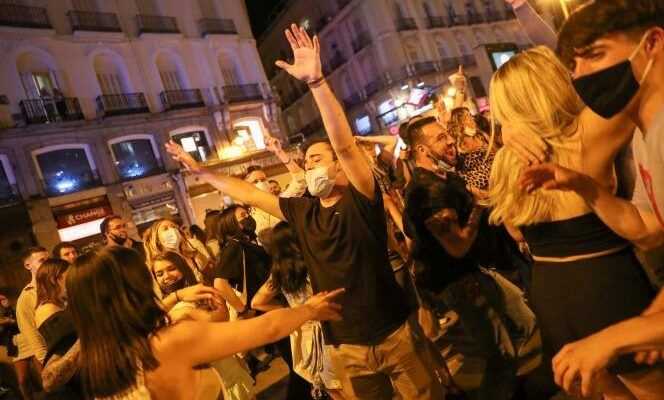Spain lifted, on the night of Saturday 8 to Sunday 9 May, the state of health emergency in force since October, allowing its inhabitants to leave their region or find relatives they had not seen for months.
Spain is one of the countries most affected in Europe by the pandemic with nearly 79,000 deaths and 3.5 million cases. The pandemic has killed at least 3,272,332 people around the world since the end of December 2019, according to an Agence France-Presse (AFP) report from official sources on Saturday.
Lifting restrictions, a headache in Spain
Apart from Christmas when the restrictions were relaxed for a few days to allow family reunions, the Spaniards have not been able to leave their region since the start of the state of emergency at the end of October.
The lifting of the state of emergency, Saturday May 8 at midnight, is a real headache for the regions, competent in the management of the health crisis. Because, since October, they had been able to impose curfews and block the entry or exit of their territory without needing the authorization of the courts, thanks to the limitation of fundamental freedoms allowed by this exceptional regime.
If it is synonymous with lifting the curfew and opening up regions, the end of the state of emergency does not mean the end of restrictions in this country.
The seventeen autonomous communities can, for example, always limit the opening hours or the capacity of bars, restaurants or shops. They can also request the reinstatement of a curfew or the closure of their territory but now need the approval of a court.
And that’s where the puzzle begins. If the tourist archipelago of the Balearic Islands or the region of Valencia have obtained the green light to maintain a curfew, the Basque Country (north), one of the regions most affected by the country by the pandemic, has seen its request for closure of the region and curfew rejected by the courts.
Several regions had put pressure in recent weeks on the executive to extend the state of emergency but the latter refused, arguing that it could not make an exceptional regime last indefinitely and highlighting the improvement of the health situation and progress of the vaccination program. In an attempt to coax them, the government has allowed regions to appeal to the Supreme Court, Spain’s highest court, if local courts challenge their measures.
Italy wants to lift the quarantine for travelers in mid-May
For its part, Italy is thinking of reopening tourism. “The objective is to once again authorize visitors from foreign countries which have reached a high level of vaccination, by relaxing certain measures from mid-May”, said Italian Foreign Minister Luigi Di Maio, after an interview with Health Minister Roberto Speranza. “We are working on how to lift the “mini quarantine” for people from European countries, the UK and Israel, if they test negative, have proof of vaccination, or have recovered from the coronavirus in the past six months. “
Current restrictions on arrivals from the rest of the EU expire on May 15. Mr Di Maio added that Italy was working to increase the number of flights “Exempt from Covid” from and to the United States, for which the quarantine requirement would be lifted in June.
Italy has been cautiously deconfining since April 26 after months of health restrictions, with bars and restaurants now being able to serve their customers outdoors.
Indian variant sparks cases in India, WHO says
Despite these reliefs, concerns remain about the variants. The B.1.617, known as the Indian variant, is more contagious and appears to be resistant to vaccines, contributing to the galloping outbreak in India, World Health Organization (WHO) chief scientist Soumya Swaminathan warned on Saturday. .
For the first time on Saturday, India recorded the deaths of more than 4,000 people from Covid-19 in 24 hours and more than 400,000 new infections, but experts believe the official figures are largely underestimated.

Also listen Oxygen shortage, varying… In India, the second wave tsunami
The B.1.617 variant could be classified by the WHO in the list of variants considered to be more dangerous than the original version of the virus because of their greater contagiousness, their ability to overcome the defenses provided by vaccination and the death rate. of affected patients, said the scientist.
But the variant alone cannot be blamed for the dramatic rise in cases in India, which seems to have let its guard down too soon, with “Large mass gatherings”, she noted.
India, the world’s largest producer of vaccines, has so far administered two doses to only 2% of its population of 1.3 billion. “It will take months, if not years, to reach a rate of 70 to 80%” of the immune population, according to the researcher.
